What Continent Is Greece Located on See You Again
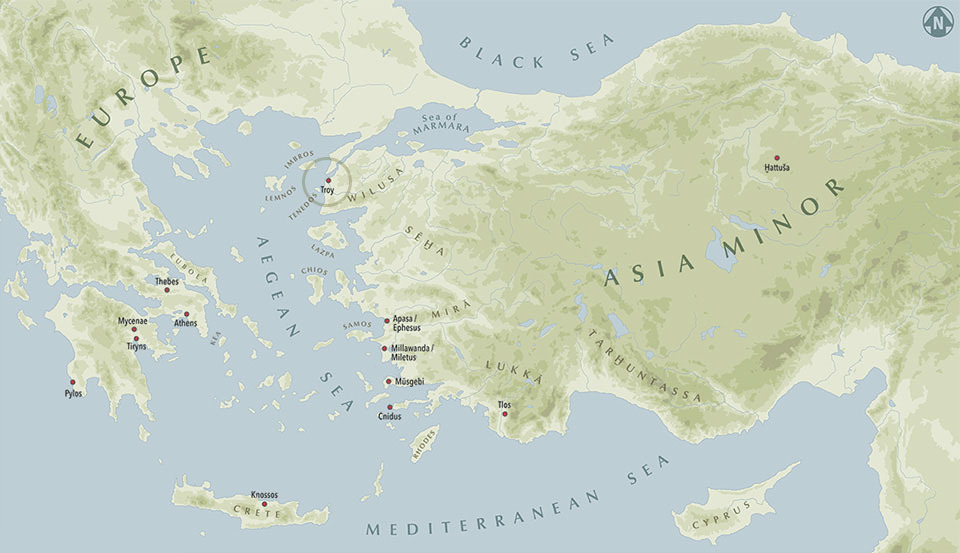
Welcome to the Interactive Map of the ancient city of Troy
The ancient city of Troy was located along the northwest coast of Asia Minor, in what is now Turkey. Information technology occupied a strategic position on the Dardanelles, a narrow h2o channel that connects the Aegean Sea to the Black Sea, via the Sea of Marmara. This was 1 of the most important trade routes in the ancient earth, and Troy'southward location enabled the city and its inhabitants to flourish, specially during the Bronze Historic period. Over the past two centuries Troy has become one of the virtually famous archaeological sites in the world. Yet despite its fame, both in literature and in our imaginations, it remains a place shrouded in myth and legend, unlike almost any other.
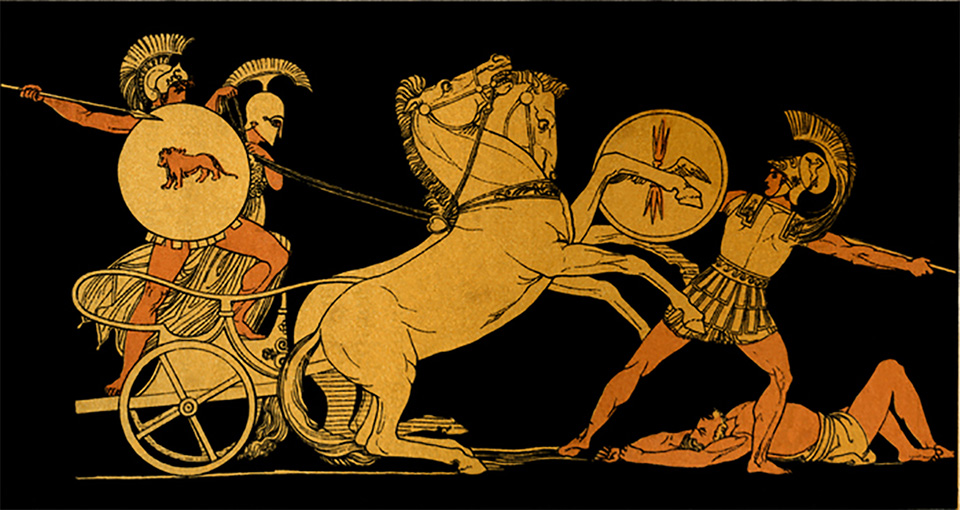
The tale of the Trojan War is possibly the well-nigh famous story of ancient Greek mythology. For nearly 3,000 years, the fabled feud between Greeks and Trojans has absorbed audiences. Tradition holds that the state of war took place during the Mycenaean Age, toward the terminate of the second millennium B.C., a time of legendary heroes and warriors. Combatants on both sides, including Achilles, Odysseus, Ajax, Agamemnon, Hector, and Aeneas remain household names fifty-fifty today. The Trojan War and its events provide the background for two ballsy poems, the Iliad and the Odyssey, which were supposedly equanimous past the poet Homer around the eighth century B.C. But these are just two examples out of the many works of aboriginal literature that relate the war's events.
The mythical conflict took place outside the walls of Troy, an ancient city on the coast of Asia Minor. Merely the seeds of war were sown far from at that place, in the city of Sparta on the Greek mainland. According to legend, the Trojan prince Paris visited Sparta, which at the time was ruled by Male monarch Menelaus. Menelaus' wife Helen was said to be the most beautiful woman in the world. When Paris departed Hellenic republic, he left with Helen by his side, enraging the Spartan leader. Not only was Menelaus a formidable king in his ain right, but his brother Agamemnon was the king of Mycenae, and the about powerful ruler in Greece. Agamemnon assembled a massive army and set sail beyond the Aegean Sea with over 1,000 ships, adamant to call up Helen from Troy.
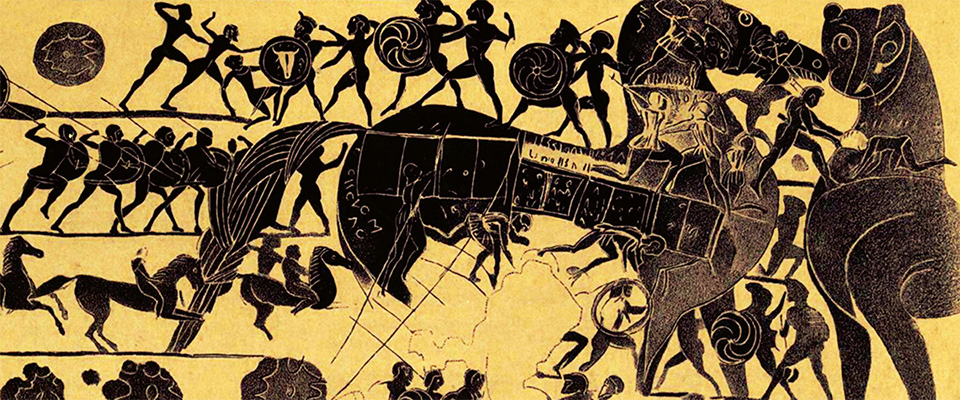
For many years the Greeks camped outside the walls of Troy, but were unable to penetrate its mighty defenses. Past the tenth year, many of the Greek soldiers longed to see their homeland once again. Thus, the cunning Odysseus finally devised a plan to cease the war once and for all. The Greeks constructed a behemothic wooden equus caballus and secretly filled it with a contingent of their best fighters. They left the horse on the beach and sailed abroad during the dark, pretending that they had finally given up and returned home. When the Trojans awoke the adjacent morning, they were astonished to see that all that remained of the Greek encampment was the big wooden horse. Assertive it to be a votive gift to the gods, offered by the Greeks to ensure their safe passage home, the Trojans wheeled the contraption inside the city walls and celebrated their hard-fought victory. That nighttime, the Greek warriors that were concealed inside the belly of the horse stealthily descended, and opened Troy'south gates to the returning armada of Greek ships. There was zip the Trojans could do as Greeks ran through their streets and ransacked the urban center. The Greeks killed and enslaved almost the entire Trojan population, with a few notable exceptions. 1 of these was a Trojan named Aeneas, who was able to escape the urban center with a pocket-sized band of friends and family. In the Aeneid, the Roman poet Virgil recounts how Aeneas settled in Italy. There his descendants eventually founded Rome.
Is the tale of the Trojan War just a myth or was information technology a real historical fact? Was there really a city called Troy? Did Homer base his poems on true events, the details of which had been passed downwards to him by generations of Greeks? These are the questions that historians have pondered for thousands of years.
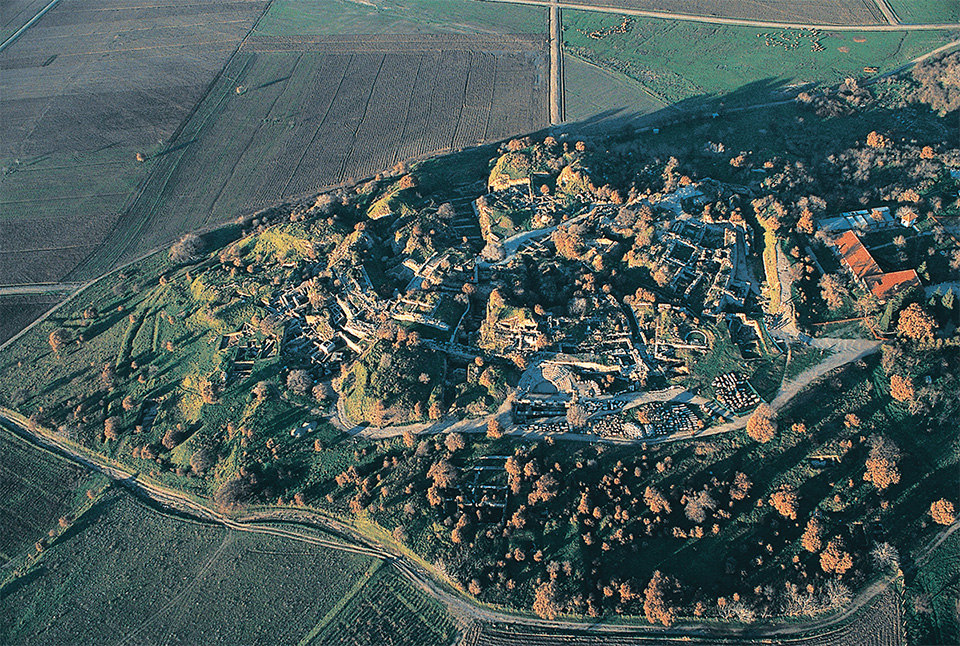
For the aboriginal Greeks, the Trojan War was a real historical effect fought by their heroic ancestors. Only until 150 years ago, many modern historians doubted its authenticity, because it to be a fictional–admitting entertaining–story created by aboriginal writers. There was no definitive proof that the urban center of Troy fifty-fifty existed. That all began to change in the mid-nineteenth century, when an apprentice archeologist named Frank Calvert began investigating a 100-foot-loftier hill near the northwestern coast of Turkey called Hisarlik ("Identify of Fortresses"). Much of the topography there seemed to match Homer'southward descriptions, and Calvert became convinced that the legendary urban center of Troy was buried beneath the loma. Calvert joined forces with German businessman Heinrich Schliemann, and in the 1870s the first large-calibration excavations of the site began. They would shortly unearth an boggling lost ancient city with a 4,000 yr-onetime history. It would become i of the most of import archaeological discoveries of all fourth dimension.
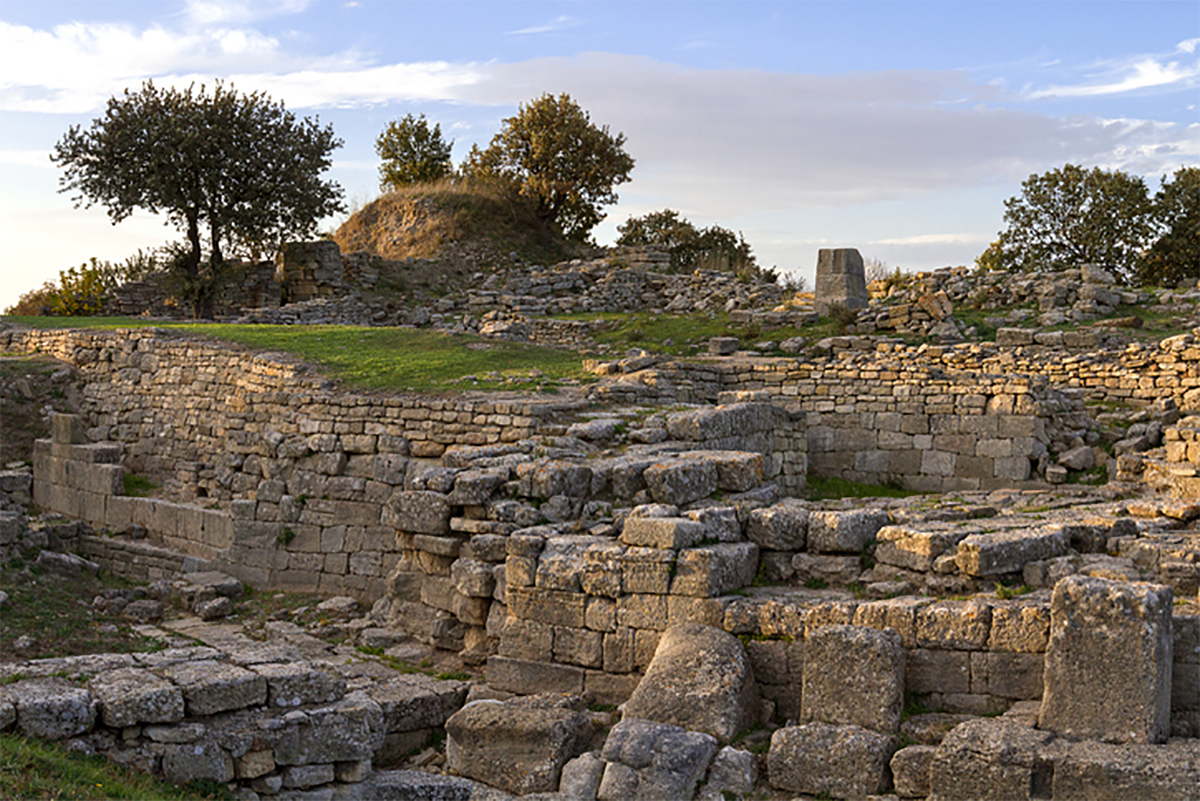
Over the past century and one-half, around 50 archaeological campaigns accept been conducted at Troy. Led by some of the field of archaeology's nearly renowned scholars, including William Dörpfield, Carl Blegen, Manfred Korfmann, and C. Brian Rose, they accept continued to farther unlock the site's subconscious history These excavations have revealed an amazingly rich, yet circuitous archaeological moving picture. The loma of Hisarlik has been congenital upon, erased, and built upon once again in a continuous cycle that lasted millennia. Therefore nosotros cannot accurately speak of Troy every bit one single city. Instead, the ruins of Troy actually comprise as many every bit nine unlike settlements stacked on top of one another, dating from 3000 B.C. to A.D. 500, a broad spectrum that ranges from the early Bronze Age to the late Roman period. These are frequently identified as Troy I-Troy 9. On the interactive map on the home page, the levels are represented by different colors. Click on the layers to glimpse various archaeological features belonging to each time period and witness how the site changed and evolved over subsequent eras.
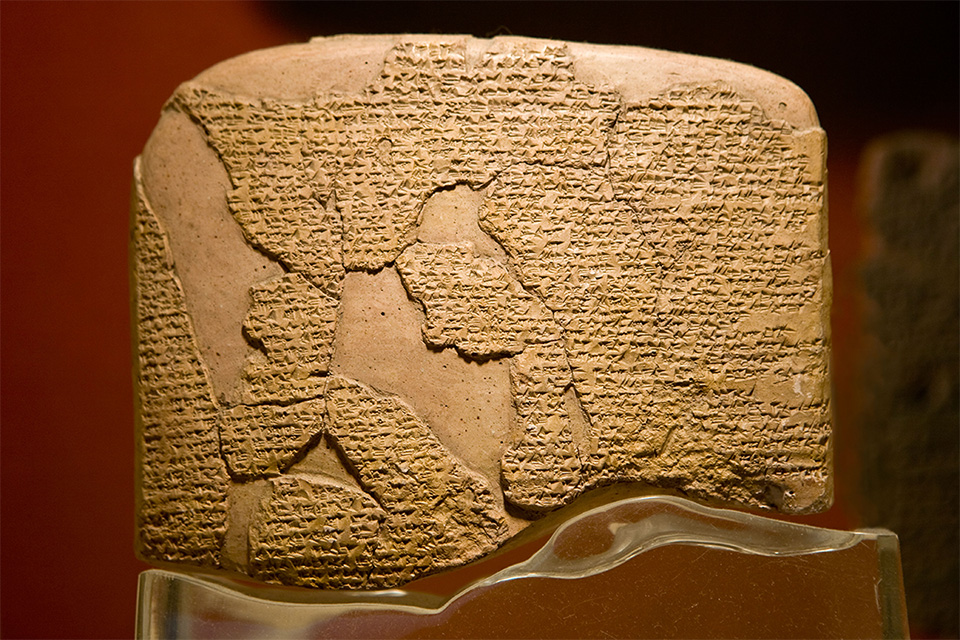
Was there a real Trojan State of war? This is one of the most highly discussed topics in Statuary Age archaeology. While in that location is no conclusive proof that the Trojan War really took place, in that location are some intriguing clues that parts of the story may take been based, at least partially, on existent events. The best show may non be found at Troy itself, but in Hittite historical documents. During the 2d millennium B.C., the Hittites ruled over a powerful empire that spread across much of modern-24-hour interval Turkey. Over the past century, archaeologists have uncovered hundreds of clay tablets in the Hittite capital of Hattusa which record official authorities and administrative business organization. Several tablets, dating to between 1400 and 1200 B.C., mention a place called Wilusa, located in western Anatolia. Almost scholars at present believe this is a direct reference to Troy. "Wilusa" is very similar to the Greek give-and-take "Ilios" or "Ilion," which is what Homer really calls Troy (the "w" had dropped out of Greek past Homer's time). In fact, the Iliad takes its proper noun from this word. One of the kings of Wilusa is likewise recorded every bit having the name Alaksandu. Homer sometimes refers to the Trojan prince Paris as Alexandros, another hitting parallel. Hittite documents also mention a group of people called the Ahhiyawans that came from across the Aegean Bounding main and were frequently in conflict with the cities forth the Anatolian coast. Many linguists believe the discussion "Ahhiyawans" refers to the Greek word "Achaeans," which is what Homer calls the Greeks ("Greek" was not a term used at that time). While this testify is far from conclusive, it does at to the lowest degree propose that during the alleged fourth dimension of the Trojan State of war, Greeks had a war machine presence in western Anatolia, that a city called Troy existed there, and that one of its regal rulers was named Alexandros.
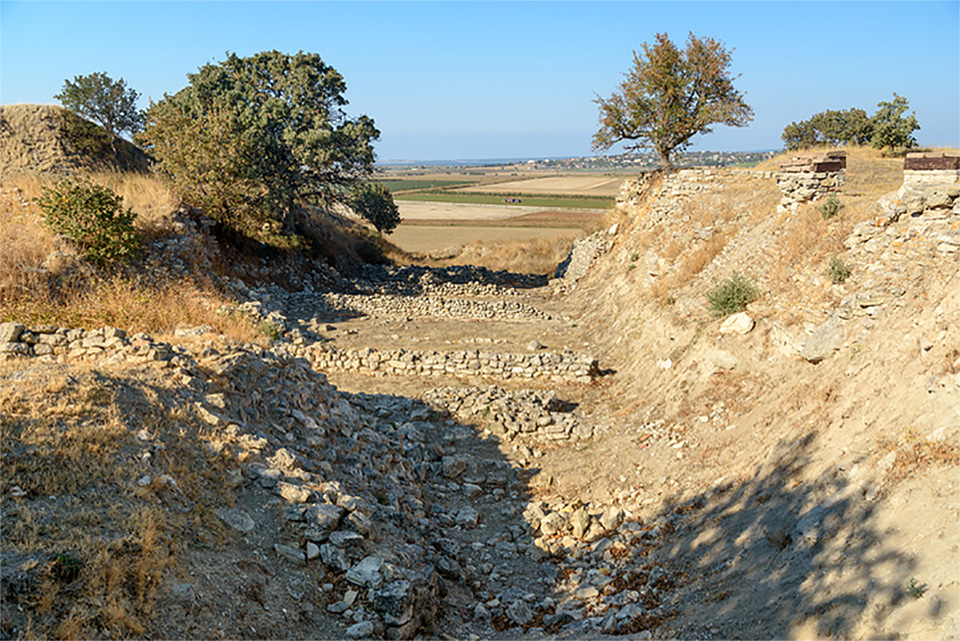
Starting time almost immediately after Troy's rediscovery, archaeologists take been searching for evidence of Homer's city inside its walls. In his eagerness to locate it, Schliemann unfortunately destroyed much of the site'south archaeology. Assuming that what he was after was at the bottom of the settlement's many layers, Schliemann dug through through 30 to 40 feet of important historical debris in his search. When he reached the layer of Troy II, he believed that he had at final found Homer's Troy, as evidenced by an exquisite collection of gold, silverish, and bronze artifacts. He called this "Priam's Treasure," after the mythical male monarch of Troy. However, Troy 2 and the treasure date to around 2400 B.C., more than 1,000 years earlier the supposed events of the Trojan War.
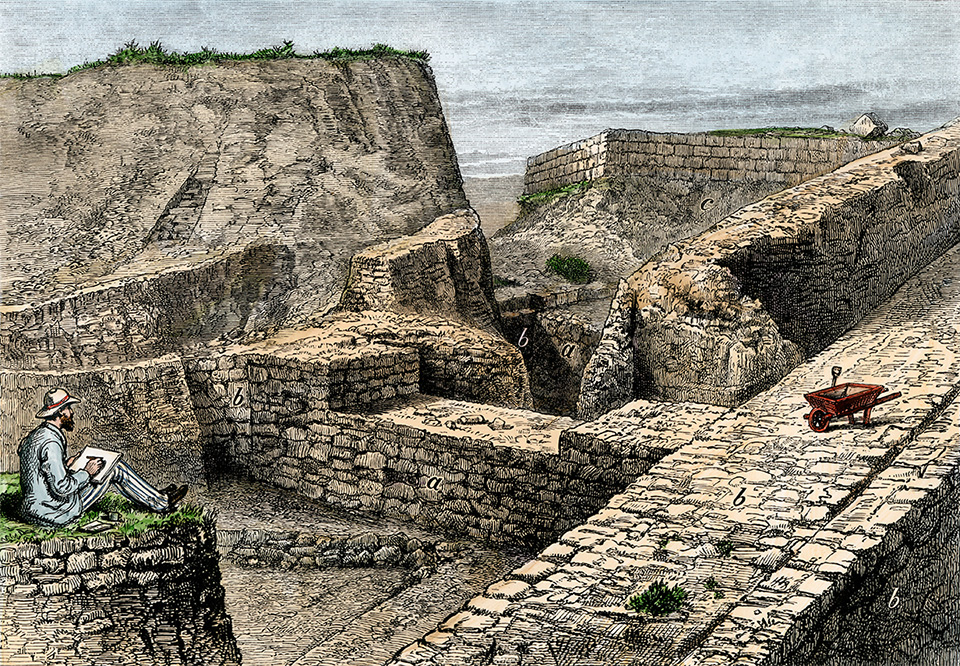
If there is indeed a level respective to the Trojan War and Homer's fabled city, some scholars believe it should be associated with either Troy 6 or Troy VIIa. During this menses, the inhabitants of Troy flourished. The city was surrounded by a circuit of awe-inspiring defensive walls worthy of the Homeric descriptions every bit "well-walled" and "stiff-built." Contempo archaeological work has also shown that the settlement was not confined to the hilltop citadel, but spread along the low-lying plains besides. Some estimates propose the city extended over an area of around 50 acres at this fourth dimension, and might have had a population of 7,000 people. There are fifty-fifty signs that it was suddenly and catastrophically destroyed. Could this exist tangible evidence of the Trojan War? It is a matter of much debate, and nosotros will probably never have a definitive answer. Nonetheless, while its associations with Homer, the Trojan State of war, and the Heroic Age are exciting to imagine, over the past 2 centuries the archaeology of Troy has revealed it truly to be ane of the most of import and intriguing sites of its fourth dimension.
Source: https://www.archaeology.org/travel/interactivemap-troy/intro.html
Postar um comentário for "What Continent Is Greece Located on See You Again"